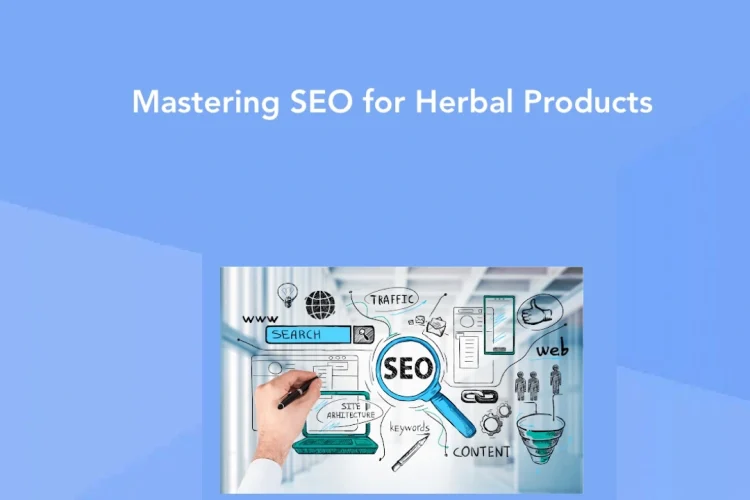In the ever-evolving world of search engine optimization (SEO), staying ahead of the curve is paramount for websites aiming to attract organic traffic. While SEO strategies are constantly being refined, a strong foundation built on best practices remains crucial. Here, we delve into five essential SEO audit “must-haves” that can significantly improve your website’s visibility and organic reach.
1. Keyword Research & Analysis: The Cornerstone of SEO Success
Keyword research is the bedrock of any successful SEO strategy. It involves identifying the search terms your target audience uses to find information or products related to your niche. This initial step acts as a roadmap, guiding all subsequent SEO efforts.
Effective Keyword Research Techniques:
- Start with Seed Keywords: Brainstorm broad keywords encompassing your core offerings or services.
- Utilize Keyword Research Tools: Leverage free and paid keyword research tools like Google Keyword Planner, Ahrefs, or SEMrush to uncover relevant long-tail keywords with lower competition but significant search volume.
- Analyze Competitor Keywords: Identify the keywords your competitors rank for to gain insights into their strategy and potential gaps you can exploit.
- Prioritize User Intent: Don’t just focus on high-volume keywords. Consider the user intent behind each search term. Are users looking for information, a specific product, or a service? Tailor your content and keyword strategy to address their intent effectively.
Integrating Keywords Naturally:
Once you have a comprehensive list of keywords, it’s crucial to integrate them seamlessly into your website content. Here’s how to achieve natural keyword integration:
- Target Primary & Secondary Keywords: Prioritize incorporating your primary keyword into your title tag, meta description, headings, and throughout the body content. However, don’t neglect relevant secondary keywords for a more comprehensive approach.
- Maintain Readability: Keyword stuffing is not only a bad practice but also detrimental to user experience. Focus on creating informative and engaging content that naturally incorporates your target keywords.
- Optimize Existing Content: Review your existing website content and identify opportunities to integrate relevant keywords organically.
2. On-Page Optimization: Fine-Tuning Your Website for Search Engines
On-page optimization refers to the process of optimizing individual web pages to rank higher in search engine results pages (SERPs). This involves various elements that signal relevance and authority to search engines.
Crucial On-Page Optimization Factors:
- Compelling Title Tags & Meta Descriptions: Craft clear, concise, and keyword-rich title tags and meta descriptions that accurately represent your content and entice users to click.
- Strategic Use of Headings: Structure your content using H1, H2, and H3 headings that incorporate relevant keywords and break down content for improved readability.
- Image Optimization: Give your images descriptive file names and alt text that include relevant keywords. This not only improves accessibility but also helps search engines understand your content better.
- Internal Linking: Create a strong internal linking structure by linking relevant pages within your website. This helps search engines understand the hierarchy of your content and distribute link equity.
- Mobile-Friendliness: In today’s mobile-first world, ensuring your website is responsive and provides a seamless browsing experience on all devices is paramount.
3. Technical SEO: The Foundation of a Strong Website
Technical SEO focuses on the backend aspects of your website that influence search engine crawlability and indexability. While often less visible to users, technical SEO plays a vital role in ensuring search engines can effectively understand and rank your website.
Key Technical SEO Considerations:
- Website Speed: A slow website not only frustrates users but also negatively impacts SEO rankings. Use tools like Google PageSpeed Insights to identify and address any website speed issues.
- Structured Data Implementation: Structured data, also known as schema markup, provides search engines with additional context about your website content. This can lead to richer search results with snippets or visuals, potentially improving click-through rates.
- Robot.txt & Sitemap Files: Ensure your website has a properly configured robots.txt file that instructs search engines which pages to crawl and index. Additionally, submit a sitemap to search engines to help them discover and understand your website structure.
- Canonicalization & 301 Redirects: Address duplicate content issues by implementing canonical tags or 301 redirects to point search engines to the preferred version of a webpage.
- Broken Link Repair: Regularly check for broken links on your website and fix them promptly. Broken links can frustrate users and negatively impact your website’s crawl efficiency.
4. Content Optimization: Engaging Users and Establishing Expertise
Content is king in the SEO realm. High-quality, informative, and engaging content is essential for attracting and retaining users. Here’s how to optimize your content for both user experience and search engines:
- Create Content Aligned with User Intent: Remember the keyword research phase? Utilize your findings to craft content that directly addresses the user’s intent behind their search queries. Informative blog posts, engaging product descriptions, and helpful guides are excellent examples of user-centric content.
- Focus on Value and Expertise: Provide valuable information that educates, entertains, or solves problems for your target audience. Establish yourself as a thought leader in your niche by showcasing your expertise through well-researched content.
- Content Freshness Matters: Search engines favor websites with fresh content. Regularly publish new content, update existing content, and consider seasonal trends to keep your website dynamic.
- Optimize Content Readability: Write in a clear, concise, and easy-to-understand manner. Use bullet points, numbered lists, subheadings, and visuals to break down complex information and enhance readability.
- Internal Linking Strategy: As mentioned earlier, internal linking plays a crucial role in SEO. Link to relevant internal pages within your content to keep users engaged, distribute link equity, and signal thematic relevance to search engines.
Backlinks, also known as inbound links, are links from other websites that point to your webpage. In the eyes of search engines, backlinks act as a vote of confidence, signifying the quality and trustworthiness of your content.
5. Backlink Profile Analysis: Building Trust and Authority
Strategies for Building a Strong Backlink Profile:
- Create Link-Worthy Content: The best way to attract backlinks organically is to create content that is valuable, informative, and share-worthy. Other websites will naturally want to link to your content if it provides valuable insights or resources for their audience.
- Earn Links Naturally: Create high-quality content that other website owners will find valuable and relevant enough to link to.
- Guest Blogging: Contribute guest blog posts to high-authority websites within your niche. Include a relevant backlink to your website within your author bio or the content itself.
- Broken Link Building: Identify broken links on websites relevant to your niche and contact the website owner to suggest your content as a replacement. This is a win-win situation – you get a valuable backlink, and they get a working link for their users.
- Social Media Promotion: Actively promote your content on social media platforms to drive traffic and potentially earn backlinks from other users who find your content valuable.
- Online Community Engagement: Actively participate in online communities and forums related to your industry. Share your expertise and provide valuable insights, while subtly including a link back to your website when appropriate.
- Monitor Your Backlinks: Use tools like Ahrefs or SEMrush to track your backlink profile and identify any spammy or low-quality links that could negatively impact your SEO.
Conclusion: A Continuous Journey Towards SEO Success
Remember, SEO is an ongoing process, not a one-time fix. Regularly conducting SEO audits using these “must-haves” as a framework will help you identify areas for improvement and refine your SEO strategy. By consistently optimizing your website, creating high-quality content, and building a strong backlink profile, you can steadily improve your website’s organic visibility and achieve lasting SEO success.





